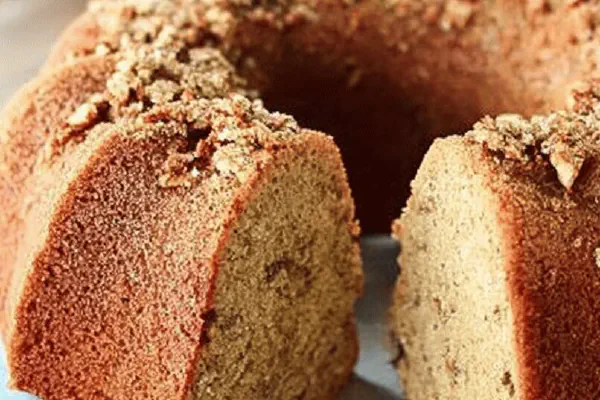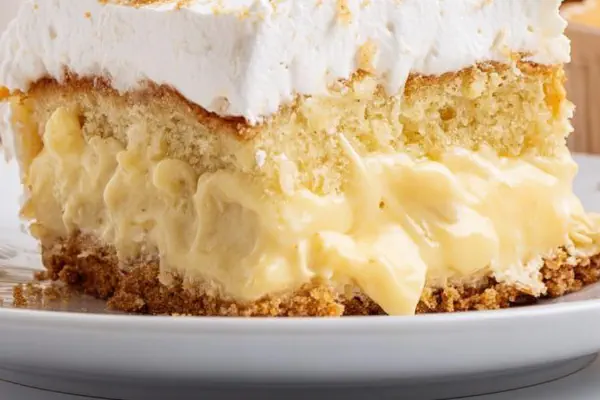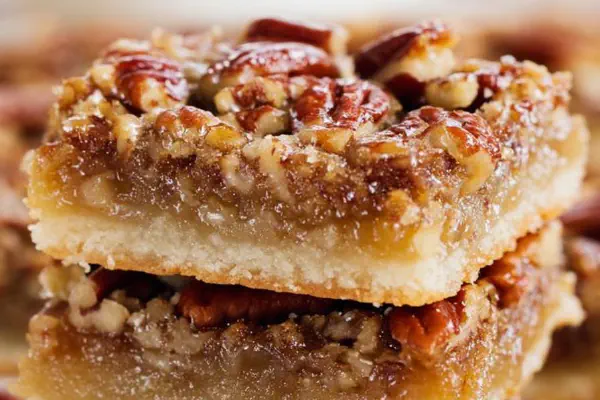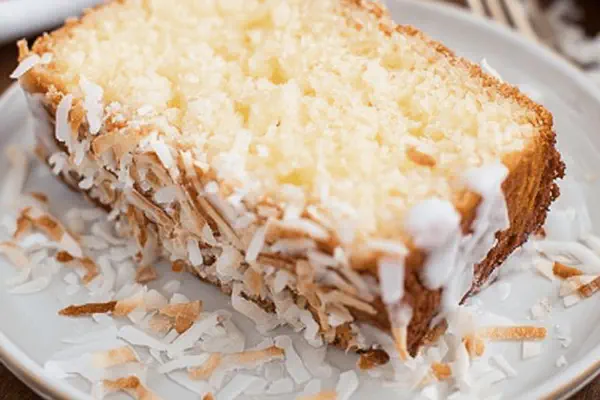Brown Sugar Pecan Cake

By Emma
Certified Culinary Professional
Ingredients
- 1 cup unsalted butter softened
- 1 cup packed dark brown sugar
- 1/2 cup granulated sugar
- 4 large eggs
- 2 1/2 cups all-purpose flour
- 1/2 teaspoon fine sea salt
- 2 teaspoons pure vanilla extract
- 1 cup toasted pecans chopped
About the ingredients
Method
- Oven set 325°F. Grease and flour a 14.5-cup bundt, tap excess flour out. Toast pecans on skillet, watch carefully, aromatic and lightly browned before chopping.
- Use stand mixer. Beat butter with sugars till pale, airy – about 5 minutes. Don’t rush; air whipped here means tender crumb. Add eggs one at a time, mix just till combined after each addition. Overmix and cake tightens.
- In separate bowl, whisk flour with salt. Add flour mixture to butter in thirds, mixing gently but thoroughly after each addition. Stops dense cake from forming.
- Stir in vanilla extract then fold in pecans last, distribute evenly but don’t overmix.
- Scrape batter into pan, smooth surface with spatula. Tap pan on counter once or twice to settle batter, release any trapped air bubbles.
- Bake 60 to 70 minutes. Check after 55 minutes by sight and smell. Cake edges start pulling from pan, golden crust with subtle cracks on top. Toothpick inserted should come out clean or with a few moist crumbs – no wet batter.
- If tops brown too fast, tent with foil last 15 minutes. Smoke alarms and burnt sugar ruins mood.
- Remove from oven, rest 15 minutes in pan. Cake firm enough to release but still warm. Invert carefully onto platter. Warm aroma and slight crack sound when unmolding is worth it.
- Cool completely before slicing or cake will crumble. Store wrapped tight to keep moist.
- Swap pecans with toasted walnuts or slivered almonds, slightly reduce nuts if using denser variety. Brown sugar ratio can shift up or down to intensify caramel notes. Granulated sugar balances moisture.
- Missed soft butter stage? Cake will be dense. Use room temp ingredients always. Avoid plastic bowls for creaming – metal or glass keeps temp steady.
- If cake seems underdone but toothpick clean, trust visual clues and touch: cake springs back lightly when poked. If very soft, give more time but watch bottom crust burn risk.
Cooking tips
Chef's notes
- 💡 Butter temp critical. Too cold lumps batter. Too warm greasy. Room temp best. Use glass or metal bowl. Avoid plastic - keeps temp steady. Soft but not melting. Pause creaming once fluffy pale cream. Wait for air whipped texture.
- 💡 Add eggs slow. One at a time. Mix just till blended. Overmix deflates air. Dense cake follows. Patience here holds crumb light. No rush. Fan out air bubbles from butter sugar fluffy mass.
- 💡 Flour mix in thirds. Whisk with salt first. Fold gently but fully. Stops gluten overdevelopment. Overmix means tight crumb. Use spoon measure, level avoids excess flour. Dry cake risk if skipped.
- 💡 Vanilla last addition before nuts. Use pure extract best, not imitation. Adds subtle complexity beyond sweet. Nuts fold in final step. Toast pecans in dry pan, lightly browned not burnt. Gives crunch gives aroma.
- 💡 Batter thick but spreadable. Tap pan on counter twice, air released. Bake 325°F low and slow. Visual cues: edges pull from pan, top cracks golden. Toothpick clean or moist crumbs no wet batter. Foil tent last 15 min if browning too fast.
Common questions
How to tell if cake is done without toothpick?
Look edges pulling away pan. Top has slight cracks. Golden crust. Press lightly, springs back. If soft or jiggles, more bake needed. Smell changes too - buttery sweet, no raw sugar odor.
Can I swap pecans for walnuts or almonds?
Yes but adjust quantity. Walnuts denser may need less nuts. Almonds slivered work well. Toast nuts first for aroma. Adds different crunch also. Keep fold gentle to preserve texture.
What if my cake is dense?
Overmixing after adding flour common culprit. Also butter not soft enough affects rise. Eggs cold shock batter too. Mixer speed high mixes out air bubbles. Room temp ingredients help hold structure.
Best way to store the cake?
Wrap tight in plastic or foil to maintain moisture. Refrigerate if warm climate but bring back room temp before slicing. Cake dries fast if uncovered. Freeze slices wrapped tightly, thaw slowly.


